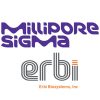Ohayou Gozaimasu. This week the term specific to Japan, the doctor would like to introduce to the readers is ‘supercalifragilisticexpialidocious.‘ Just kidding! This week’s term is ‘Ninsho.‘ Ninsho is the pre-market submission process associated with Class II devices in Japan. Class II devices are also known as “Specified Controlled Devices.” Additionally, Class II devices are subject to the Japanese pre-market approval process.
This week’s topic for Devine Guidance is a subject that is near and dear to Dr. D’s heart, design and development. As many of my readers already know, the doctor is quite big on ensuring that only medical devices that are safe and effective make their way into the hands of qualified healthcare professionals. From Dr. D’s perspective, medical devices that are safe and effective are rooted in a robust design. Yes, the Quality Management System (QMS) is important; however, a bad design and development process will result in a crappy design; and a crappy design will result in a crappy device. Now the doctor has been accused of quiddity (look-it-up) from time-to-time while providing the readers with his abundance of humble opinions. However, please remember, Dr. D writes in the hope that the readers can glean some useful information needed to keep their organizations in compliance with regulatory and statutory requirements, worldwide.
Ministerial Ordinance Number 169 (2004)
Chapter Two “Manufacturing Control and Quality Control in Manufacturing Sites of Medical Device Manufacturers, etc.”
Section Five – Product Realization
(Design and Development Planning)
Article 30 The manufacturer, etc. shall establish the documented procedure for the design and development.
2. The manufacturer, etc. shall establish the plan of the design and development of the products (hereinafter referred to as the “design and development plan”) and control the design and development of the products.
3. The manufacturer, etc. when they establish the design and development plan, shall determine the following items.
(1) The design and development stages,
(2) The review, verification, validation and design transfer activities (the duties, during the design and development process, to ensure that the design and development outputs are verified as suitable for the manufacturing before becoming the final production specifications) that are appropriate at each design and development stage, and
(3) The responsibilities and authorities of the departments and personnel concerned with the design and development.
4. The manufacturer, etc. shall manage the interfaces between different groups involved in the design and development to ensure effective communication and clear assignment of the responsibility.
5. The manufacturer, etc. shall ensure that the design and development plan are documented, and updated as appropriate, as the design and development progresses.
(Design and Development Inputs)
Article 31 The manufacturer, etc. shall ensure that the following inputs relating to the product requirements are determined and the records are maintained.
(1) The functional, performance and safety requirements, according to the intended use,
(2) Where applicable, the information derived from the previous similar designs,
(3) The outputs of the risk management specified in Paragraph 5 of Article 26,
(4) The applicable regulatory requirements, and
(5) Other requirements essential for the design and development.
2. The manufacturer, etc. shall ensure that these inputs are reviewed for adequacy and approved.
(Design and Development Outputs)
Article 32 The manufacturer, etc. shall ensure that the outputs of the design and development are provided in a form that enables the verification against the design and development input.
2. The manufacturer, etc. shall ensure that the outputs of the design and development are approved prior to the release to the next process.
3. The manufacturer, etc. shall ensure that the design and development outputs meet the following requirements.
(1) To meet the input requirements for the design and development,
(2) To provide appropriate information for the purchasing, production and for the
service provision,
(3) To contain or reference the product acceptance criteria, and
(4) To specify the characteristics of the products that are essential for their safe and proper use.
4. The manufacturer, etc. shall ensure that the records of the design and development outputs are maintained.
(Design and Development Review)
Article 33 The manufacturer, etc. shall ensure that, at suitable stages, the systematic reviews of the design and development (hereinafter referred to as “design and development review”) are performed for the purpose of the following items in accordance with the arrangements defined in the design and development plan.
(1) To evaluate the ability of the results of the design and development to meet the requirements, and
(2) To identify any problems and propose necessary actions.
2. The manufacturer, etc. shall ensure that the participants in such reviews include the representatives of the departments concerned with the design and development stages being reviewed, as well as other specialist personnel.
3. The manufacturer, etc. shall ensure that the records of the results of the reviews and any necessary actions are maintained.
(Design and Development Verification)
Article 34 The manufacturer, etc. shall ensure that the verification is performed in accordance with the arrangements defined in the design and development plan to ensure that the design and development outputs have met the design and development input requirements.
2. The manufacturer, etc. shall ensure that the records of the results of the verification specified in preceding Paragraph 1 and any necessary actions taken are maintained.
(Design and Development Validation)
Article 35 The manufacturer, etc. shall ensure that the design and development validation (hereinafter referred to as “design and development validation”) is performed in accordance with the arrangements defined in the design and development plan to ensure that the resulting products are capable of meeting the requirements for the specified application or intended use.
2. The manufacturer, etc. shall ensure that the design and development validation is completed prior to the delivery or implementation of the products. In case where the design and development validation can only be conducted following the assembly and installation at the point of the use, the validation shall be completed prior to the delivery of the medical devices to their user.
3. The manufacturer, etc. shall ensure that the records of the results of the design and development validation and any necessary actions are maintained.
(Control of Design and Development Changes)
Article 36 The manufacturer, etc. shall ensure that the design and development changes are identified and records thereof are maintained.
2. The manufacturer, etc. shall ensure that the changes are reviewed, verified and validated, as appropriate, and approved before the implementation.
3. The manufacturer, etc. shall ensure that the review of the design and development changes includes the evaluation of the effect of the changes on the constituent parts and products already delivered.
4. The manufacturer, etc. shall ensure that the records of the results of the review of the changes specified in preceding Paragraph 2 and any necessary actions are maintained.
What device manufacturers need to know
I am sure that the readers of this current series on MO 169 are getting pretty-darned tired of hearing Dr. D state; “MO 169 requirements are similar to the requirements delineated within EN ISO 13485:2003.” However, the basic quality concepts continue to be strikingly similar and in some cases word-for-word. In that regard, MO 169’s requirement for design and development continues to follow the established pattern. Effective design and development commences with a written procedure. For those of you familiar with the finer points of medical device design and development, the word “Phase” should be at the top of your thought pattern in regards to design control. Design and development activities, contrary to the belief of some, do not occur in a vacuum, unless the design lab is onboard the International Space Station, then one can make the argument that it does (LOL). Seriously folks, design and development occurs in phases, with each phase having a unique set of deliverables and a documented design review. Simply stated, it is not acceptable to say; “Dude that looks good to me so let’s try it on a patient.” That being said, the doctor will explain what is expected of device manufacturers as they strive for compliance with MO 169’s requirement for design and development.
Where’s the plan? Remember that phrase. Why? A successful approach to design and development starts with a design and development plan. The plan must contain sufficient granularity and address:
- The design and development stages (employ the phased approach);
- The verification of design outputs, design reviews, design verification, design validation, and design transfer activities; and
- The responsibilities and authorities of all personnel, including all functional groups that are involved in the design and development process.
Make sure the design and development plan is updated as progression through the design and development cycle occurs. Remember, the design and development plan should be considered a dynamic document, not a static one.
An organization cannot verify design outputs if design inputs have not been specified or the inputs have been poorly defined. Wow, real rocket-science comment from the doctor. All kidding aside, design inputs must be defined, documented, reviewed, and approved. In fact, plan on holding a design review to discuss and review the design inputs. As a minimum, the following elements need to be considered when determining design inputs:
- The targeted functional characteristics of the device;
- The performance characteristics of the device;
- Device safety requirements;
- Relevant device information extracted from similar or predicate devices;
- Risk management activities (focus on the output);
- Regulatory and statutory requirements; and
- Anything else the design and development team can think of that can be considered relevant to the design and development process.
Similar to the design inputs, the expected design outputs must be defined, documented, reviewed, and approved. Can you say design review? Good, because the design outputs should be reviewed as part of the design review process. Additionally, the design outputs should actually be verified against the design inputs. Who knew? Elements to consider when defining design outputs are:
- Do design outputs support the design inputs (verification process);
- The availability of information to support purchasing and production, and the service provision;
- References to the criteria for product acceptance; and
- The identifying of product characteristics essential for product safety and efficacy.
Design reviews, as the doctor has already hinted at, are essential to a successful design and development program and should be woven into the entire process. As a minimum, a design reviews should occur at the end of each phase; however, it is acceptable to hold multiple design reviews within a phase. The depth and detail of the design review will be heavily influenced by the complexity of the design. Although not specifically defined in Article 33 of MO 169, Dr. D recommends following the 21 CFR, Part 820.30(e) requirement of having an independent review person partake in the design review activities. Finally, remember the salient purpose of the design review is to properly review and analyze all activities up to the point of when a design review is held. If goals of the design have not been achieved, it is acceptable to repeat portions of the design and development process. Granted, remediation activities are expensive and will negatively impact the project timelines; however, the goal must be to design a medical device that is safe and effective. Taking short cuts is not germane to the design and development discussion.
Design verification and design validation activities are also salient requirements defined in Articles 34 and 35 of MO 169. Since it is difficult to separate the two, the doctor will discuss them together. First off, the intent of the design verification process is to ensure design outputs have met the design input requirements. Another way to think of the design verification process is to ask a simple question. Was the device designed correctly?
The design validation process is employed to determine if the newly designed device actually conforms to user needs and requirements. In short, the device must be able to perform in its intended use, including being safe and effective. The way to think of the design validation process is to ask another simple question. Was the correct device designed?
The doctor is going to share some more earth-shattering news with the readers. You cannot arbitrarily make changes to a design. Yes, Dr. D knows that it should be considered common sense to document all changes; however, #@$% happens. As a minimum, design changes must be documented, reviewed, verified, and validated.
One final thought in regards to design and development, is the need for records to support the entire design and development process, including the need to support evidence of compliance. Just like Europe (MDD, IVDD, and AIMDD) and the United States (QSR), the Japanese require meticulous records. In fact, not having meticulous records is just not acceptable for device manufacturers. Why? Because having a compliant QMS, including a record-retention policy/procedure is a fundamental requirement needed to participate in the device industry, regardless of market.
What device manufacturers need to do
Of course Dr. D is going to push the continuance of building a robust requirements matrix that maps an organization’s QMS to quality, regulatory, and statutory requirements because this approach is rooted in too much common sense. However, the entire design and development process is far too important not to invest some serious time in the creation of design and development procedures. For virtual device companies that outsource all or part of their design and development work, companies such as Alandra Medical (no Dr. D is not a paid spokesperson for this organization) do a fabulous job of providing design and development support for medical device companies. Regardless of the approach pursued, complying with all of the requirements delineated within Articles 30 to 36 of MO 169 is a mandatory requirement.
Some more advice the doctor can offer is to employ a cross-functional team when establishing the design and development procedures. Yes, the product development engineers are probably going to be able to provide the vast majority of technical input into the design and development procedures; however, marketing, clinical, purchasing, manufacturing, quality, and regulatory will have viable inputs into the creation of an effective design and development program as well. Remember, it will be the regulatory folks that will be tasked with ultimately assembling the pre-market submissions; and information extracted from design and development activities will be salient deliverables included in the Todokede, Ninsho, or Shonin, depending on device classification.
Procedure
|
Requirement
|
21 CFR Part 820
|
EN ISO 13485: 2003
|
MHLW MO 169 |
1250-1 Rev A
|
Design & Development Planning |
820.30 (b) |
7.3.1 |
Article 30 |
|
1250-1 Rev A
|
Design & Development Inputs |
820.30 (c) |
7.3.2
|
Article 31 |
| 1250-1 Rev A |
Design & Development Outputs |
820.30 (d) |
7.3.3 |
Article 32
|
| 1250-1 Rev A |
Design & Development Review
|
820.30 (e) |
7.3.4 |
Article 33 |
| 1250-1 Rev A |
Design & Development Verification
|
820.30 (f) |
7.3.5 |
Article 34 |
|
1250-1 Rev A
|
Design & Development Validation |
820.30 (g)
|
7.3.6 |
Article 35 |
|
1250-1 Rev A
|
Control of Design & Development Changes
|
820.30 (i) |
7.3.7
|
Article 36
|
Takeaways
It will be an impossible task designing a medical device that is safe and effective, in its intended use, without the establishment of a well-documented design and development process. That being said, the doctor will leave the readers with five takeaways from this week’s guidance.
- Ensure your organization takes their time when identifying design inputs and design outputs, as taking short cuts or failing to properly address these input steps will result in a “crappy” device design.
- Always employ a phased approach for design and development.
- Design reviews are important tools needed to define, review, address, and potentially correct and resolve design issues.
- The design must be properly validated.
- All design changes must be documented, reviewed, approved, verified and if necessary validated.
Until the next edition of DG, when the doctor begins providing guidance on MO 169 – Chapter 2, Section 5 “Product Realization” (Articles 37 through 39 – Purchasing Process), sayonara from Dr. D and best wishes for continued professional success.
References:
- Code of Federal Regulation. (2011, April). Title 21 Part 820: Quality system regulation. Washington, D.C.: U. S. Government Printing Office.
- EN ISO 13485:2003. (2004, February). Medical devices – quality management systems – requirements for regulatory purposes (ISO 13485:2003).
- Japan medical device approval and certification. (2012, July). The Emergo Group Website. Retrieved July 29, 2012, from http://www.emergogroup.com/services/japan/medical-device-approval-japan
- Ministerial Ordinance 169. (2004). MHLW ministerial ordinance 169 on standards for manufacturing control and quality control for medical devices and in-vitro diagnostic reagents. Retrieved June 1, 2012, from http://www.pmda.go.jp/english/service/pdf/ministerial/050909betsu3.pdf
Related Articles
-
The expansion of BlackHӓgen’s HFE team and other critical usability-focused design groups, such as the UX team, will support the company’s ability to deliver its expertise to a wider range of MedTech customers.
-
Bringing design and quality assurance processes together earlier in the device development process can reduce costs and nonconformances, while improving outcomes.
-
The acquisition expands MilliporeSigma’s portfolio to a full range of bioreactors, from 2ml to 2000L, and adds to the company’s expertise in monoclonal antibody (mAb) process development.
-
The acquisition expands Veranex’s European footprint as well as the scale and scope of its clinical studies capabilities.






